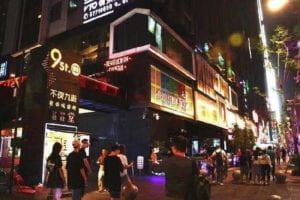When I lived in New York, my apartment is close to Hell’s kitchen, an area that’s famous for restaurants and bars. Most of restaurants are located in 8 – 9th ave on the west side of Manhattan in New York City. From Asian food to middle-east food, Hell’s kitchen creates a food and drink area where midtown workers, tourists and theatre lovers love to dine in. Similarly, in Chongqing, the city I grow up, “The 9 street” (九街) is like a mini hell’s kitchen where local young people love to come here to find food and drink. You can’t find those streets in tourist guidebooks but people who lived in the city will recommend you to those places.

In the article “Spaces of Everyday Diversity: The Patchwork Ecosystem of Local Shopping Streets”, authors believe that three main groups, business owners, building owners, and shoppers define what sort of place the neighborhood is. This theory can apply to The 9st. and Hell’s kitchen’s ecosystem. For example, in Hell’s kitchen, most of shopkeepers are restaurant or bar owners, and some of them are convenient store owners. They gather together to create several food streets, and those restaurants on the street range from Asian, American to middle-east food. Therefore, this ecosystem attracts more restaurants to open in this area, and new yorkers are more likely to search food in Hell’s kitchen. Besides, Hell’s kitchen is close to Broadway and Time square, so before and after people go to theatre shows, they would love to find somewhere close to eat.

The 9st. in Chongqing is another example that three main groups build food & drink ecosystem streets. Five years ago, The 9st is just a neighborhood with bakery shops and two bars. Because it’s location is near another commercial street. More restaurant owners and club owners start to open their business in The 9st. Because building owners offer cheaper rent, more business owners come to this street so it eventually becomes a street famous for nightlife. Of course, government’s regulations also boom its popularities. Big shopping mall start to raise and more commercial streets near The 9st also start to expand.
Media coverage on social media also promote The 9st. Just like what’s said in the article “ social media reinforce the image of a successful street and contribute to its branding.” The 9st is really popular on social media such as TikTok and Xiao Hong Shu (小红书). Food bloggers and influencers love to introduce nice restaurants and speakeasy bars on social media, and The 9st is also there first choice. Therefore, business owners, shoppers, government policies and social media create the ecosystem of this nightlife street.
Leave a Reply